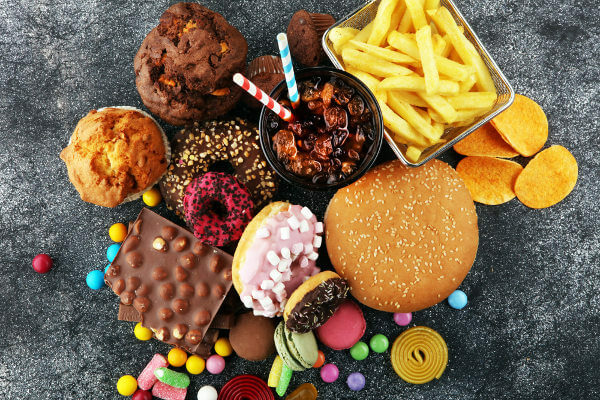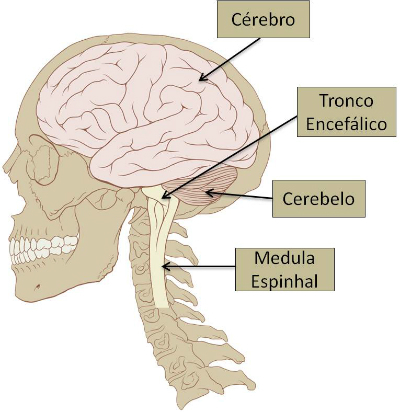You carbohydrates are important biomolecules, also known as hydratesincarbons,carbohydrates, or sugars, formed fundamentally by atoms of carbon, hydrogen and oxygen. They are the most abundant biomolecules in nature and most have the following general formula:
(CH2O)no |
It is worth noting that some carbohydrates have other elements in its composition. This is the case of chitin, for example, which also has nitrogen atoms in its formula.
Read too: Proteins: mind map, abstract, function, types
Mind Map: Carbohydrates

* To download the mind map in PDF, Click here!
Function of carbohydrates
Carbohydrates have as main function the energetic function. However, carbohydrates have functions that go beyond ensuring energy for cells, and they are also related to nucleic acid structure and structural functions, for example.
With regard to structural function, we can mention cellulose and chitin. Cellulose is an important component of the plant cell cell wall, while chitin is part of the exoskeleton present in arthropods.
Do not stop now... There's more after the advertising ;)
Carbohydrate classification
Carbohydrates can be divided into three classes. We'll talk more about each of them below.
Types of Carbohydrates |
Features |
Examples |
monosaccharides |
Simple carbohydrates that act as blocks (monomers) from which other more complex carbohydrates, such as disaccharides and polysaccharides, will be formed. Monosaccharides can be classified according to the main carbon chain (see more on this topic below). |
Glucose, galactose and fructose. |
Disaccharides |
Carbohydrates formed by two monosaccharides through glycosidic bonds. |
Sucrose (formed by glucose and fructose), maltose (formed by two glucose molecules) and lactose (formed by glucose and galactose). |
Polysaccharides |
Complex carbohydrates formed by several monosaccharides joined together by glycosidic bonds. |
Starch, cellulose and glycogen. |
Classification of monosaccharides

Glucose is an important monosaccharide.
Monosaccharides can be classified according to the number of carbons they have in their molecules. The simplest monosaccharides are the trioses, which have three carbons in their molecule. After trioses, we have tetroses (four carbons), pentoses (five carbons), hexoses (six carbons), and so on. The main monosaccharides are pentoses and hexoses. Among pentoses, ribose stands out, while in hexoses, glucose stands out.
Simple and complex carbohydrates
Carbohydrates can be classified into simple and complex. Simple carbohydrates are easilyabsorbed by our body, while the complexes have a slower absorption process. According to the Brazilian Diabetes Society, simple carbohydrates are made up of simple sugars or a pair of them, while complexes are made up of more complex sugar chains.
They are examples from foods that have simple carbohydrates, honey, brown sugar, candy and sweets in general. As an example of foods that have complex carbohydrates, we can mention bread, pasta, beans and lentils.
Examples of Carbohydrates
Next, we'll talk about some important carbohydrates.
Glucose: it is a simple carbohydrate and also the most common monosaccharide. Glucose is essential for carrying out the process of cellular respiration, where energy will be produced for the cell. The main polysaccharides are formed by the polymerization of glucose.
Starch: it is the main energy reserve substance of vegetables. It is made up of two types of glucose polymers: amylopectin and amylose. The starch grains of the plants are stored inside the plastos, typical plant cell organelles.
Glycogen: it is the main energy reserve of animals and is formed by the union of several glucose molecules. This glycogen is found stored in our liver and also in our muscles. When we need energy, glycogen is broken down into glucose, which will be used by cells.
Cellulose: it is found in the cell wall of the plant cell and is made up of glucose units. It is a fibrous carbohydrate, resistant and insoluble in water. An interesting fact is that wood is made up of almost 50% cellulose, while cotton fibers are almost 100% cellulose.
Kitchenette: is a polysaccharide found in the cell walls of some fungi and also in the composition of the exoskeleton of arthropods, such as insects and crustaceans.
Foods rich in carbohydrates
Carbohydrates are found in all plant food. This is due to the fact that plants produce them in the photosynthesis process and store carbohydrate as an energy source. Some foods have a higher concentration of carbohydrates when compared to others.
Among the foods rich in carbohydrates we can mention corn, rice, cassava, potatoes and yams. We can't also forget about breads, pastas and sweets. It is noteworthy that dairy foods also contain carbohydrates, as well as honey.
Read too: Risk of excessive sugar consumption
Carbohydrates make you fat?

Carbohydrates are not the villains, the main problem being an inadequate diet.
Carbohydrates are foods that must be present in our diet, as they are important for supplying energy to our body. It is recommended that about 45% to 65% of daily calories come from this food group, however, one must be aware of each person's metabolic needs.
When ingested in excess, they can be related to health problems such as obesity. However, a low-carbohydrate diet can also be harmful, as as mentioned earlier, this nutrient is essential for energy supply. Therefore, it is important to know dose the amount of carbohydrates ingested for them to adequately fulfill their role.
Read too:Recommendations for healthy eating
Carbohydrate Summary
Carbohydrates are usually made up of carbon, hydrogen and oxygen atoms. However, it is worth noting that some carbohydrates may have other elements in their composition.
Carbohydrates are also called sugars, carbohydrates or carbohydrates.
Carbohydrates have an energetic function, structural function and participate in the formation of nucleic acids.
Carbohydrates can be classified into monosaccharides, disaccharides or polysaccharides, with monosaccharides being the simplest carbohydrates.
Glucose is the best known monosaccharide.
Cellulose and starch are two important polysaccharides. Cellulose is a component of the cell wall of plant cells, while starch acts as a reserve substance for plants.
Carbohydrates can be further classified as simple and complex.
By Ma. Vanessa Sardinha dos Santos



